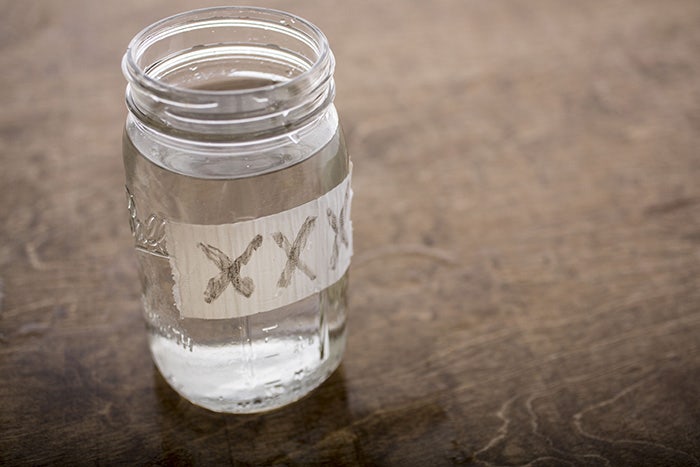I don’t care what you call it. White Dog. Hooch. White Lightning. If it’s anywhere near the “moonshine” category, you can keep it.
For Wine Enthusiast’s forthcoming batch of new American whiskey reviews, we flung the door open wide, featuring American single malts, Tennessee whiskeys, along with oddball whiskeys that defied categorization. But moonshine? That door was bolted firmly shut.
Why didn’t I want to try them? After all, we’ve given white whiskeys 90+ ratings in the past. Although I prefer whiskey with some barrel time on it, I’m not opposed to minimally aged white whiskey. It’s specifically the moonshine category that makes me grit my teeth.
It’s not really “moonshine.”
Much like modern “speakeasies” are legal bars that pretend to be “secret,” today’s “moonshine” is also completely faux.
The original definition of moonshine is a distilled spirit that’s made illicitly, usually with the intent to evade taxation (or, previously, prohibition). You may know someone who makes their own moonshine at home. That’s the real stuff. Nobody is bottling that up, slapping a “moonshine” label on it and sending it my way to score and review.
I’m talking about the growing number of legal spirits producers who have taken up the “moonshine” mantle. What’s in the bottle varies. It’s usually whiskey, but sometimes it’s a neutral spirit or a weird rum that masquerades as “sugar ‘shine.” Often, it’s made from corn. It’s also not always unaged. But I can say with certainty that it’s not moonshine.
Much like modern “speakeasies” are legal bars that pretend to be “secret,” today’s “moonshine” is also completely faux.
“Much of the current demand for legally produced moonshine has been filled by small distilleries, who are often new to the booze business,” says Kevin Kosar in his book Moonshine: A Global History. “Moonshine is an attractive product for them—they can sell it and reap revenue right after it comes off the still. (Barrel-ageing spirits is costly; one must procure barrels, which are relatively expensive, and a place to store them. The spirits also evaporate, meaning less comes from the barrel than was initially put in.)”
It’s mostly undrinkable stuff.
One of my beefs with the commercial moonshine concept is that many distilleries use it as an excuse to rush out immature whiskey. It’s something to keep the cash flowing while the good stuff rests in barrels.
It doesn’t have to be that way. Some producers try to make a quality product. A couple of years ago, I talked at length with Troy Ball, owner of Troy & Sons in Asheville, North Carolina, about her “Platinum Whiskey,” She bills it as “the world’s finest moonshine.” While I bristle at that phrase—why can’t it just be white whiskey?—I appreciate her motive.
“I was offered moonshine a number of times when we moved to Asheville,” she said. “The old-timers would bring it.” Most of what they brought was terrible, she says, as it was too high-octane to drink.
Eventually, she learned the truth: the locals kept the good stuff at home. Once she tried some of these private reserves, Ball decided to model her product after them.
“The moonshine you find at the store was nothing like what the old men were making,” she said.
Flavored “moonshine” is even worse.
I can only assume that excessive sweetener and artificial flavor is meant to cover up a poorly made base spirit. Like flavored vodka, so many “sweet tea-” and “apple pie-” flavored moonshines don’t fulfill their promise. (Not to mention the South Carolina distillery that offers a “Pink Panty Dropper Watermelon Moonshine” flavor. Are you trying to troll us?)
And then there’s the mason jars.
I’d gladly sign a petition to do away with mass-produced moonshine packaged in oversized mason jars, if only because I can never pour from them without spilling. There’s a swatch of carpet in my office that still reeks of cinnamon-apple moonshine.
A gimmicky bottle idea that was more successful? Stillhouse’s corn whiskey, presented in a red metal flask.
Of course, if you’re among those who make authentic moonshine at home, I salute you. I’d even be game to try a swig or two. I can’t guarantee that a home-distilled moonshine will be something that I’ll love. But if it’s the real thing, it’s certainly something I can respect.
Published: June 1, 2017















